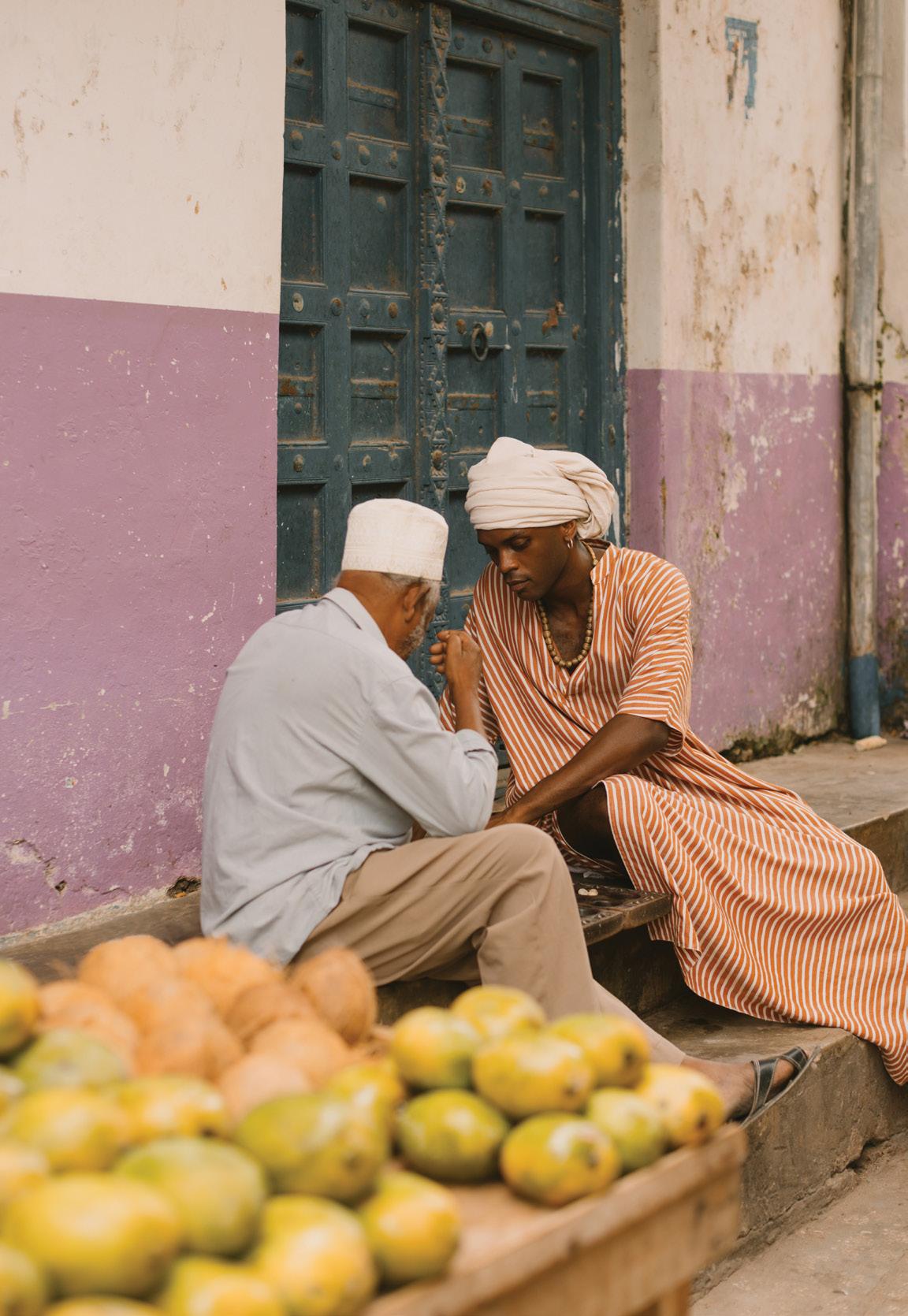SOUTH
Off the coast of Tanzania, several islands come into sight. Though I have travelled to East Africa extensively, this is my first visit to Zanzibar.
words and photos: Dan Carter
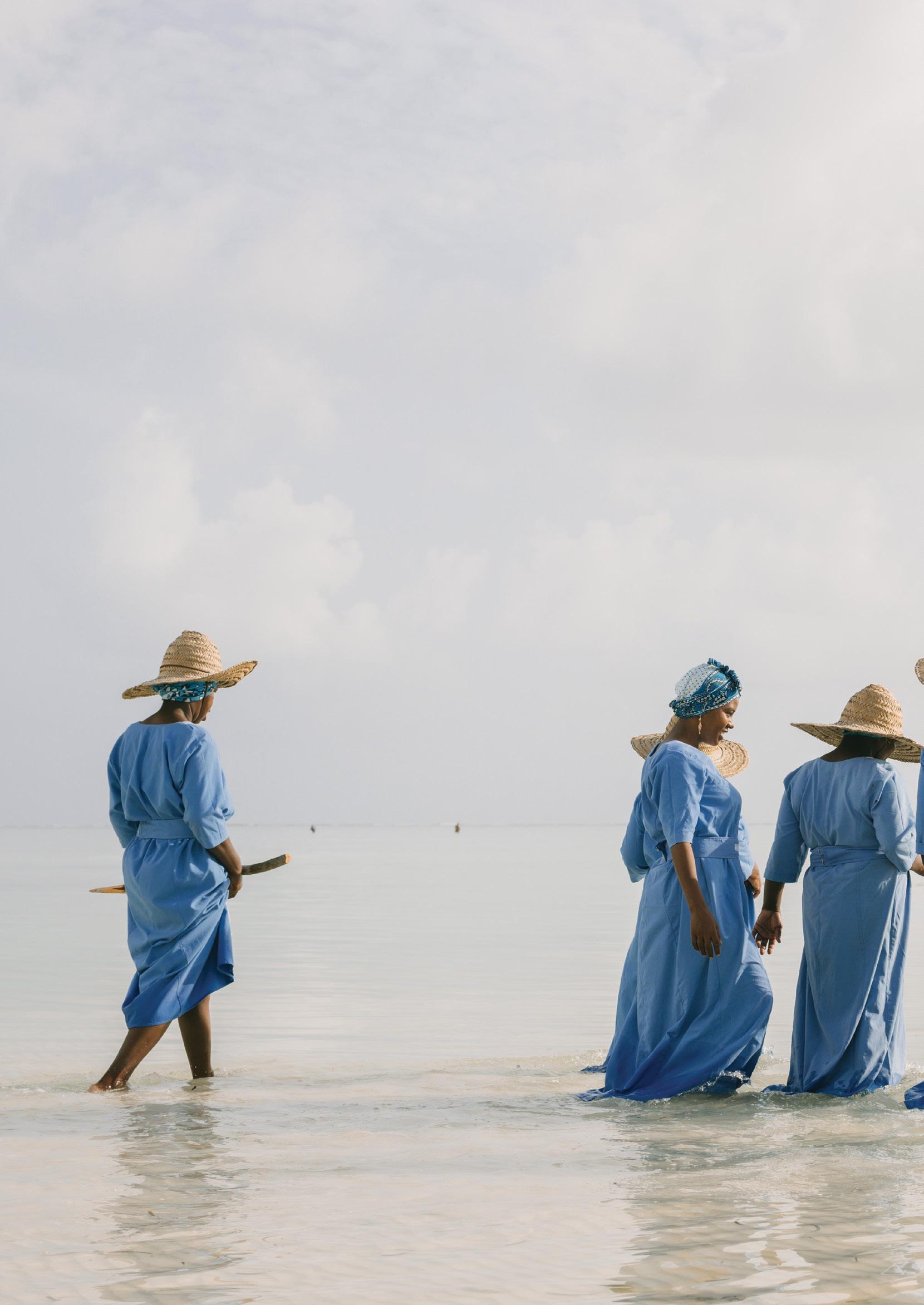
Zanzibar’s COAST
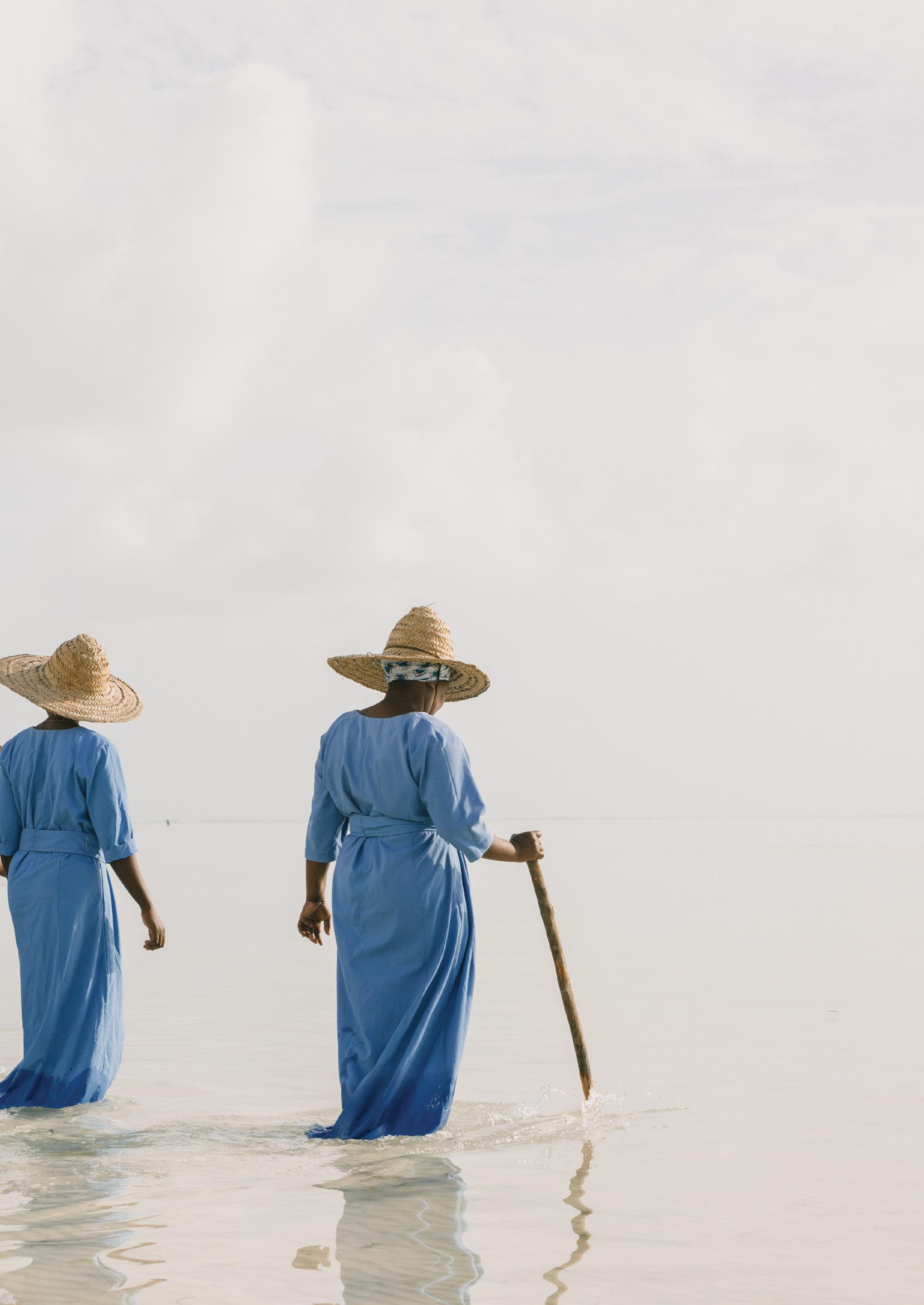
Asmall crowd gathers around the weighing tables upon Dimbani beach, waiting with anticipation as red and white snappers are brought to shore. Weighed and sold, most of this morning’s catches are sent to market.
I expected hustle and chaos, emphasised by the blazing midday sun, but I was also greeted with a warm smile from my driver Suileman, leading us straight to Zanzibar Coffee House for a welcome coffee. The island truly embodied the Swahili phrase ‘pole pole’ or ‘slowly slowly’ which was the perfect pace for much-needed rest and relaxation.
With tourism now accounting for 27% of Zanzibar’s GDP, many of Zanzibar’s popular towns have become crowded. But while tourists flock to the white sand beaches of Nungwi and Paje, a few pockets of authentic island life remain in Zanzibar.1
Not far off the beaten path, a quieter side of the island is just an hour’s drive from Abeid Amani Karume International Airport.
Located on the southern coast of Zanzibar, Kizimkazi is a small coastal fishing village where one can find kizikula. The village is home to many historic sites, including the Kizimkazi Mosque, one of the oldest mosques in East Africa, and the Kizimkazi Dolphin Sanctuary, where visitors can swim with dolphins in their natural habitat. Laid-back, local, and lush with towering trees and vibrant foliage, Kizimkazi offers a sense of seclusion and distance from the world.
Welcome to kizikula
“If you want to experience the village, take this bicycle and ride there,” says my hotel rep Angela. She presented me with a ‘vintage’ bicycle – one pedal missing, the heavy steel frame just about intact though the bell still rang perfectly. Nobody seemed particularly phased as I wiggled and winded along the straight road which led to Dimbani beach, stopping to admire the intricate fixing of fishing nets and various stalls of fresh mangos while carefully navigating the village dogs – even they minded their own business here.
An abundance of palm trees line the dirt roads leading to kizikula. Thoughtful design with simplicity in mind, this boutique nine-bedroom hotel is carefully built to complement its surroundings, neither obtrusive nor overbearing. Each room, hidden from the next, offers utmost privacy in an intimate and luxurious setting; a quiet oasis for couples as well as long-term residents, an initiative set up during the pandemic to provide idyllic out-of-office working conditions.
In addition to its luxurious facilities, kizikula is known for its commitment to sustainability. The hotel operates a number of environmentally friendly initiatives, such as using renewable energy sources and implementing waste management systems. It’s committed to preserving the natural beauty of the local area for future generations.
From an onsite organic farm, a daily menu offers only the freshest local produce including fruit, vegetables, fish and homemade breads.
Mwani Zanzibar
Zanzibar has a well-documented history of trade but one of its less-known growing exports is seaweed, now accounting for almost 8% of GDP.2
The seaweed farming industry in Zanzibar is a crucial part of the local economy, providing employment and income for many families in Paje and the surrounding area.
Mwani Zanzibar launched to create secure careers for those working on the coastline, harvesting seaweed on the beach of Paje and processing it into natural skincare products.
Employees at Mwani Zanzibar are paid a living wage as well as providing paternity leave and healthcare insurance for individuals and families.
Capturing the essence of island life is not limited to local villages.
The majority of Zanzibar’s population live in the narrow streets of Stone Town, a UNESCO World Heritage Site. The traditional Swahili trading town is a fusion of African, Arab, Indian, and European influences, reflecting its history as a trading centre and melting pot of cultures.
Stone Town is a living testament to Zanzibar’s rich cultural heritage but there is no denying the evidence of its complex and tragic history from the brutal European and Asian slave trade. The Slave Memorial, a monument dedicated to the victims of the slave trade is found in the very heart of Stone Town – a reminder of the impact that these brutalities had on Zanzibar and its people. Even more than monuments and museums, the clash of cultures is elevated through the pungent scent of Asian spices mixed with the sea air.
There’s a difference between visiting a destination and experiencing it. Emerging ourselves in the complexities of different cultures, we absorb our experience through sight, smell and taste which I believe is one of life’s greatest treasures.
Perhaps, what I appreciated most about Zanzibar was the opportunity to step back; a reminder of the simplicity of life – the essence of what it is to be human.
1 World Bank, Zanzibar can accelerate poverty reduction by seizing more opportunities to diversify its tourism sector, 2022.

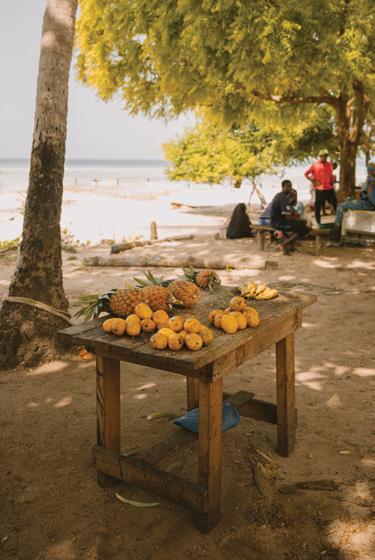

Beside the serene fishing village of Kizimkazi, kizikula is a nine room hotel set among coral reef banks on the southern coast of Zanzibar, kizikula places thoughtful design and sustainable living at its core. Double rooms start from US$275 per night complete with air conditioning, and indoor and outdoor showers.
www.kizikula.com
Emerson Zanzibar consists of two unique hotels in Stone Town, rich in culture and just a few minutes walk from each other: Emerson on Hurumzi (from US$125 per night) and Emerson Spice (from US$400 per night).
www.emersonzanzibar.com
Social enterprise Mwani Zanzibar farms and processes seaweed to create all-natural soaps and skincare products. The seaweed is farmed in Paje, on the south-east coast of Zanzibar with products available at various outlets and hotels across the island.
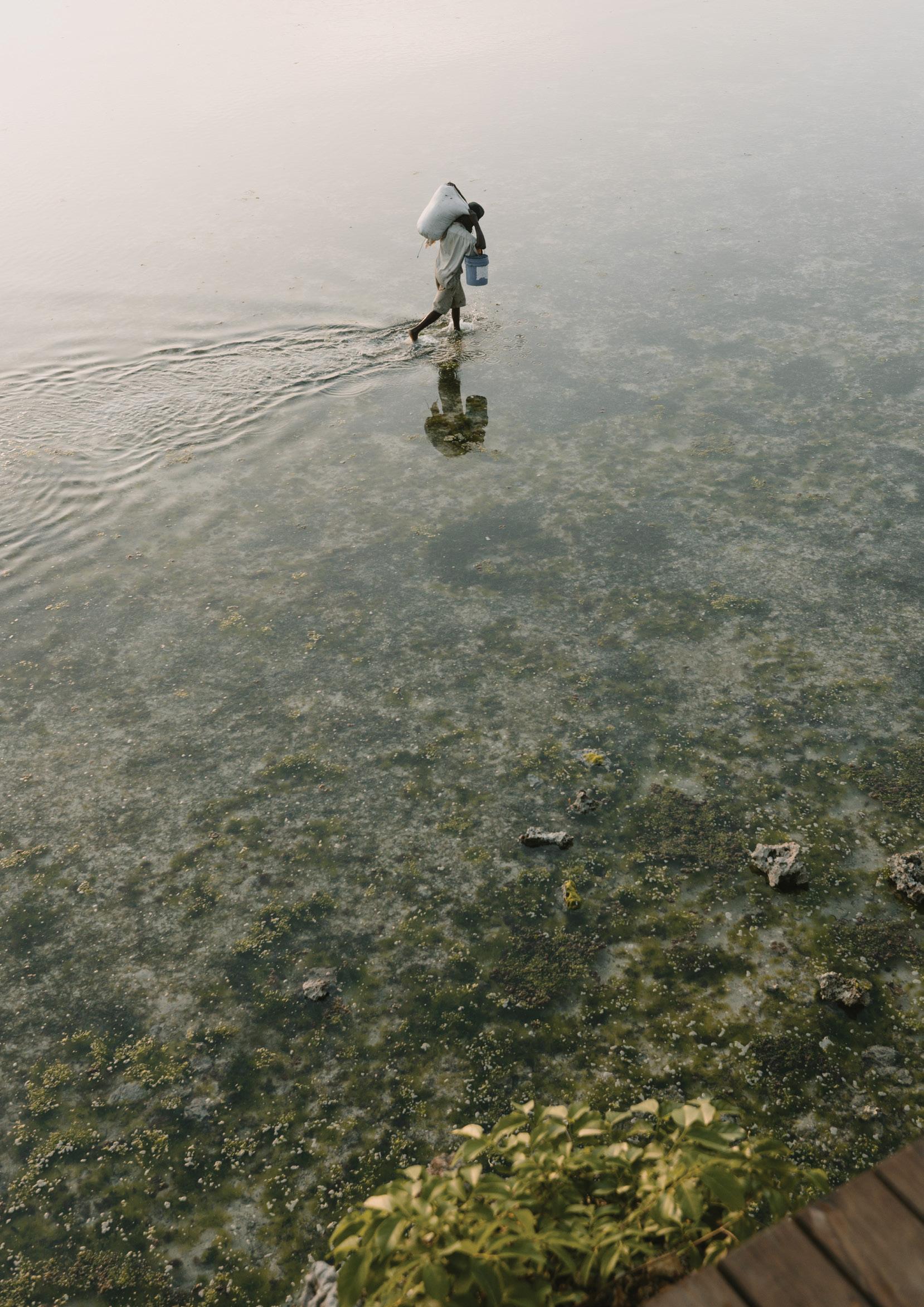
www.mwanizanzibar.com
Kenya Airways offer return flights from Johannesburg with an easy stop over at NBO Nairobi and a total flight time of 6.5 hours. Currently there are 10 direct flights from Nairobi to Zanzibar each week.
www.kenya-airways.com
Zanzibar’s South Coast
THE JOURNEY
words and photos: Dan Carter
Embracing the collision of African and Arabic influence, we pay homage to island life alongside worldrenowned African designers such as Lukhanyo Mdingi. Many poses were inspired by the old Swahili postcards that used playful and romantic expressions to highlight everyday life across East Africa in the 1900s.
Prita Meier, co-creator at the Smithsonian’s National Museum of African Art in Washington, D.C. writes: “These portraits depict people in a variety of fascinating poses: Looking at the camera [in] sometimes playful, sometimes seductive, sometimes serious ways… most subjects dressed in their best outfits, but others took the opportunity to slip into other lives and identities.”
Each day brings new experiences and challenges, yet it all remains grounded by the unchanging beauty of nature. Like the tides, life will continue to ebb and flow so we have no choice but to embrace it and find meaning in each moment, as Manka Menga writes in an extract from her poem, ‘Nuru Yangu’:
“... wanetu watatunzwa, si tu mbingu lakini pia upeo. hivyo yote tisa la kumi na la maana zaidi alfajiri hadi adhuhuri Magharibi hadi wa manane kwa heri na kwa haki nitawakilisha nitahamasisha nuru yangu nitaiacha iangaze.”
Roughly translated from Swahili as:
“Our people will be taken care of, not just heaven but also scope. So all nine the tenth and more important dawn to noon. West to midnight for goodness and justice. I will represent I will inspire my light I’ll let it shine.”
1 NPR, The surprising history of old-timey Swahili postcards, 2018.
Images, clockwise:
Cedrick
Cedrick
Cedrick Dauberton wearing top from Lukhanyo Mdingi’s Burkina collection paired with pants from Lagos Space Programme
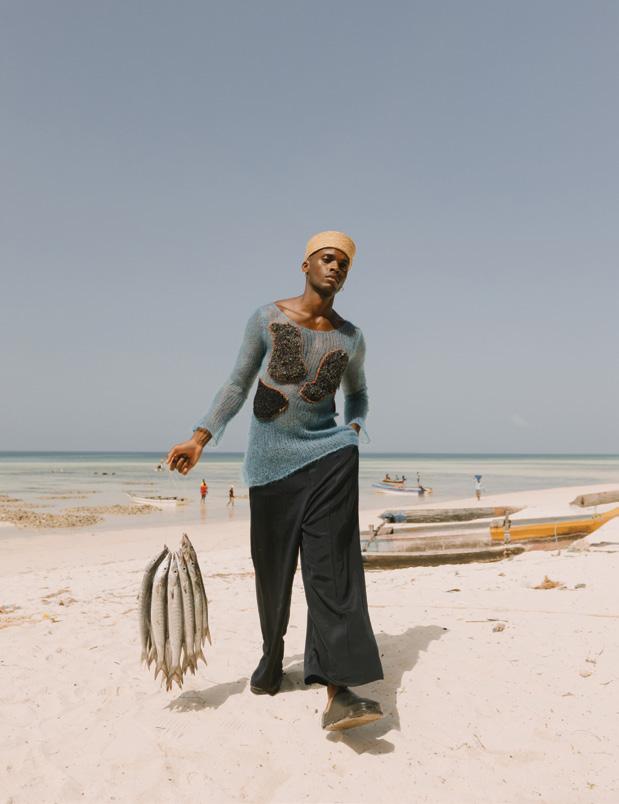
Cedrick Dauberton wearing Viviers Shrunken PlissÉ, Jacquard coat-dress. Manka Menga wearing Hamaji’s cream check kaftan with jewellery from Sidai Design


Opposite page: Manka Menga wearing Hamaji’s cream check kaftan with jewlerry from Sidai Design’s Origin collection
 Dauberton wears a double breasted tie-dyed suit by Lukhanyo Mdingi paired with a handmade wheat straw fez by Crystal Birch
Dauberton and Manka Menga wearing full looks from Lagos Space Programme’s Project 7/ Post-Adire. Manka Menga wearing jewellery from Obtuse Jewellery and shoes from Kkerele
Dauberton wears a double breasted tie-dyed suit by Lukhanyo Mdingi paired with a handmade wheat straw fez by Crystal Birch
Dauberton and Manka Menga wearing full looks from Lagos Space Programme’s Project 7/ Post-Adire. Manka Menga wearing jewellery from Obtuse Jewellery and shoes from Kkerele

